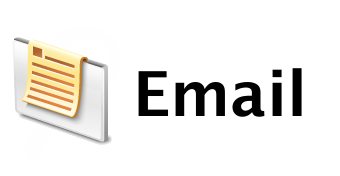As marketing tools go, email is definitely not “sexy” anymore the way social media is now. That doesn’t mean that email marketing isn’t worthwhile though. Done right, it can still be a powerful tool for lead generation. Leads are the metric that marketers live and die on because leads mean money. Here are five tips for using email as a lead generating machine.

1. Data is your friend. If your list just has names and address, then it is sadly lacking and will not be very effective. Get as much data on your prospects and current customers as possible. You can use this data to segment your list and create highly targeted mailings. Things to keep in mind when do you segmenting are job title, company size, and industry, etc. The issues faced by the start-up are very different from those faced by a mid-sized company in the same industry and if your emails are targeted by industry and don’t take size into account, then you’ll miss out on leads. The more you can customize your emails, the more likely they’ll be read and acted upon.
2. Nail the landing. If your emails direct customers to your homepage, you’re probably wasting your time. If your homepage is like most people’s homepage, it’s not a great lead generator, and even if it is, the homepage is not specific enough a destination—you don’t want your customers to have to search on your website to find the event info they were promised in the email (they won’t search for it).
Just like you target and segment your emails, you’ll want to create customized landing pages for each of your campaigns. These landing pages should resemble the email in content and appearance as much as possible. That means, if you send out a mailing about an ebook, don’t put all four ebooks you have up on the landing page. Put the one you promised in the email up and only after your customers download it, should you put up links to the other ebooks you want to share. This keeps your landing pages simple and reduces customer confusion.
3. Give them a reason to read you. How many emails do you get each day that get deleted without ever being opened? If you’re like most people, you probably get quite a few emails that never get opened and I guarantee that your customers certainly don’t open all of their email. If you want them to open your mailings, you have to give them a good reason.
That reason starts with a compelling (and customized!) subject line. The subject line should be short (30 or so characters), create a sense of urgency, and also give readers some indication of what to expect when they open the email.
Once you get them to open your email, the battle is not done. If your email is too long, your recipients will likely skip your message. Keep your message short and get to the point quickly. To use a news term, your main message and call-to-action should be “above the fold.”
Bonus tip: since many email providers strip images out of emails, make sure that nothing essential is included in the graphics (or if there is essential info in the graphics, include it in the text part too).
4. Measure everything. Any good email marketing program will provide you with an abundance of data, measuring everything from who opened your email, clicks, and much more. Dive into this data and use it to refine your campaign. The best part of digital marketing is that you can easily make corrections mid-flight. And if you make a mistake, you can fix that.
5. Use the 5-second test. When your email is all ready to go, have a friend or colleague look at it for 5-seconds. Can they quickly tell what your call-to-action is? What your message is? If so, you’re good to hit “send.” If not, it’s back to the drawing board!
Social media gets most of the attention these days, but it’s not the only tool in the B2B marketer’s tool chest. Just like you wouldn’t stop using a screwdriver just because it was old, you shouldn’t stop using email.







